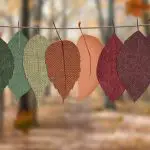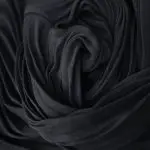Looking to master the art of working with fabrics? Ever wondered which hand stitches are absolutely essential for your sewing projects?
In the world of fabric manipulation, understanding and mastering the seven fundamental hand stitches is crucial. These stitches are the building blocks for creating strong and beautiful seams, hems, and decorative elements in your fabric work.
With the right knowledge and skill in these essential hand stitches, you'll be well-equipped to handle a wide range of fabric projects with confidence and precision.
Let's explore the key hand stitches that will elevate your fabric work to a whole new level.
Key Takeaways
- Running stitch and backstitch are essential for creating secure and even seams, with the running stitch being versatile and adaptable to various projects.
- Slip stitch is essential for seamless finishes on hems, linings, and closures, achieving nearly invisible seams and a professional finish.
- Blanket stitch is a versatile hand stitch for decorative and functional purposes, ideal for edge finishing and appliqué projects, providing clean edges and preventing fraying.
- Whip stitch is essential for joining fabric pieces together, creating a neat and sturdy seam, suitable for a wide range of fabric types.
Running Stitch
When working with fabrics, mastering the running stitch is essential for creating secure and even seams. This fundamental stitch is a cornerstone of hand embroidery techniques and is widely used in both decorative and functional applications. To execute a running stitch, bring the needle up through the fabric and then insert it back down in a straight line, creating a series of evenly spaced stitches. This stitch is ideal for basting, gathering fabric, and creating simple, straight seams. It's a versatile stitch that can be adapted to various projects, making it an indispensable skill for anyone working with fabrics.
To achieve mastery of the running stitch, it's essential to practice maintaining consistent stitch length and spacing. This precision ensures that the resulting seams aren't only secure but also visually pleasing. Additionally, understanding how the tension of the thread affects the appearance and durability of the stitch is crucial for achieving professional results.
Backstitch
To create secure and durable seams when working with fabrics, you need to master the backstitch. This hand sewing technique is essential for creating strong seams that can withstand tension and stress. The backstitch involves overlapping the stitches, creating a continuous line of thread that's both flexible and sturdy. It's particularly useful for creating seams in areas that undergo a lot of movement, such as the crotch of pants or the underarms of garments.
There are variations of the backstitch that can be utilized depending on the specific requirements of your sewing project. For instance, the half backstitch is a quicker alternative that still provides strength, while the backstitch with a smaller stitch length offers added durability. Understanding these variations will allow you to adapt the backstitch to different fabrics and sewing tasks.
Mastering the backstitch is crucial for anyone looking to excel in hand sewing techniques. By practicing and perfecting this method, you'll be able to create professional-looking, long-lasting seams in your fabric projects.
Slip Stitch
When it comes to working with fabrics, mastering the slip stitch is essential for creating seamless finishes on hems, linings, and closures. The slip stitch allows you to secure fabric invisibly and is a valuable skill for anyone who works with textiles.
Importance of Slip Stitch
You frequently use the slip stitch to create nearly invisible seams and finishes in your fabric projects. The importance of the slip stitch lies in its ability to achieve a hidden seam, especially when working with delicate fabrics.
Here's why mastering the slip stitch is crucial for your sewing repertoire:
- Professional Finish: The slip stitch allows you to achieve a professional and polished finish, elevating the overall look of your garments or home decor projects.
- Preservation of Fabric: This stitch helps in preserving the delicate nature of certain fabrics by creating seamless closures without causing any damage.
- Versatility: Mastering the slip stitch provides you with a versatile skill that can be applied across various sewing and mending tasks, giving you confidence in handling different fabric types.
Mastering the Slip Stitch
Once you've mastered the slip stitch, you'll gain confidence in creating nearly invisible seams and finishes in your fabric projects.
The slip stitch, also known as ladder stitch or blind stitch, is an essential skill for achieving an invisible hemming and professional finish. With this technique, you can seamlessly join two folded edges, allowing for concealed seams and a polished appearance.
To master the slip stitch, start by aligning the edges of the fabric and securing them with pins. Then, using a threaded needle, carefully pick up a few threads from one side of the fabric, followed by a few threads from the other side, creating a hidden stitch.
Practice and precision are key to achieving a flawless, seamless look in your sewing projects.
Blanket Stitch
When working with fabrics, the blanket stitch is a versatile hand stitch that serves both decorative and functional purposes.
It's commonly used for edge finishing and is ideal for appliqué projects.
Understanding the technique and application of the blanket stitch will enhance your sewing skills and allow you to create beautifully crafted fabric projects.
Versatile Edge Finishing
The blanket stitch is an essential hand stitch for versatile edge finishing on fabrics. When you master this technique, you'll achieve a clean edge that adds a professional touch to your projects.
This stitch is particularly useful for securing the edges of fabric, preventing fraying and ensuring durability. As you practice and perfect the blanket stitch, you'll develop a sense of satisfaction and pride in your craftsmanship.
This versatile stitch allows for intricate fabric manipulation, enabling you to create decorative borders and embellishments that elevate the overall look of your creations.
With dedication and attention to detail, you can master the art of blanket stitching and enhance the quality and aesthetic appeal of your fabric-based projects.
Decorative and Functional
Master the blanket stitch to add both decorative flair and functional durability to your fabric projects. This versatile stitch is ideal for creating decorative embroidery along the edges of your fabric, adding a touch of elegance to your designs.
Its interlocking loops not only serve an ornamental purpose but also provide functional reinforcement, making it perfect for securing edges and preventing fraying. When used for decorative embroidery, the blanket stitch can elevate the aesthetics of your projects, adding intricate detailing and a professional finish.
Additionally, its strength and resilience make it a valuable asset for functional repairs, such as mending tears or attaching patches.
Ideal for Appliqué
After mastering the blanket stitch for decorative and functional purposes, you can now explore its ideal application for appliqué. When using the blanket stitch for appliqué techniques, you can create stunning and intricate designs that elevate your fabric projects to new heights.
Here's why the blanket stitch is ideal for appliqué:
- Precision: The blanket stitch allows for precise and neat outlines, ensuring that your appliqué pieces are securely attached with a professional finish.
- Mastery: Mastering the blanket stitch for appliqué empowers you to experiment with creative fabric embellishment, adding depth and texture to your projects.
- Versatility: With the blanket stitch, you can seamlessly attach appliqué pieces to various fabrics, from delicate silks to sturdy denims, expanding your creative possibilities.
Whip Stitch
To create a secure and neat finish when joining two pieces of fabric, use a whip stitch. This versatile hand stitching technique is essential for garment construction and adding decorative embellishments. The whip stitch is commonly used for hemming, attaching trims, and joining seams. It involves passing the needle over the fabric's edge in a diagonal motion, creating a spiral pattern that provides both strength and a clean, polished look.
When incorporating the whip stitch into garment construction, ensure that the stitches are evenly spaced and maintain consistent tension to prevent puckering or bunching. For decorative purposes, experiment with different thread colors and textures to add visual interest to your projects. Whether you're working with delicate fabrics like silk or heavier materials such as denim, the whip stitch adapts to various fabric weights and types.
Mastering the whip stitch is a valuable skill for anyone working with fabrics. Its versatility and strength make it an essential technique for both functional and decorative sewing. With practice, you can achieve professional-looking finishes and secure fabric joins using this fundamental hand stitch.
Basting Stitch
When working with fabrics, you'll find the basting stitch to be a crucial hand stitching technique for temporarily securing layers of fabric together before permanent sewing. The basting stitch is highly versatile and has various applications, making it an essential skill for any sewing enthusiast.
Here are some key points to consider when delving into the world of basting stitch techniques and applications:
- Precision: Mastering the basting stitch requires precision and attention to detail. It's a skill that demands practice and patience to achieve neat and even stitches.
- Emotion: Frustration may arise initially, but with perseverance, you'll experience the satisfaction of creating perfectly basted layers that facilitate smooth and accurate permanent stitching.
- Versatility: The basting stitch isn't limited to securing fabric layers. It's also used for creating gathers, easing in fullness, and attaching trims, showcasing its diverse range of applications.
- Emotion: Excitement will grow as you realize the multitude of ways the basting stitch can elevate your sewing projects, allowing for greater creativity and precision in your work.
Mastering the basting stitch techniques and understanding its applications will undoubtedly enhance your sewing skills and elevate the quality of your finished projects.
Overcast Stitch
An overcast stitch is a practical hand sewing technique used to encase raw fabric edges and prevent fraying. This stitch is essential for seam finishing, especially on fabrics that tend to unravel. By using an overcast stitch, you can ensure that your fabric edges remain neat and fray-resistant, adding durability to your sewing projects.
To master the overcast stitch, follow these steps:
| Steps | Instructions |
|---|---|
| Step 1 | Thread your needle with a matching thread. |
| Step 2 | Start from the wrong side of the fabric and bring the needle to the right side. |
| Step 3 | Take a small stitch along the raw edge of the fabric and then loop the thread over the edge. |
| Step 4 | Repeat the process, spacing the stitches evenly. |
| Step 5 | Finish by securing the thread with a knot on the wrong side of the fabric. |
Frequently Asked Questions
What Are Some Common Mistakes to Avoid When Using These Hand Stitches?
When using hand stitches, common mistakes to avoid include improper technique, which leads to inaccurate results and tension issues. Focus on improving accuracy and maintaining proper tension for successful stitching with fabrics.
Are There Any Specific Fabrics or Materials That These Stitches Are Not Suitable For?
When considering specific fabrics and materials, it's essential to understand hand stitch limitations and fabric compatibility. Certain delicate fabrics like chiffon or sheer materials may not be suitable for heavy, visible stitches.
Can These Hand Stitches Be Used for Repairing or Mending Clothing?
Yes, hand stitch techniques are vital for repairing clothing. Mending clothes with essential stitches like backstitch, running stitch, and slip stitch can help you restore and reinforce garments, extending their lifespan.
Are There Any Tips for Making These Hand Stitches More Durable and Long-Lasting?
To reinforce hand stitches and extend their lifespan, use a thimble to prevent wear on your fingers, choose a strong, durable thread, and knot the end securely. Additionally, make smaller stitches for added durability.
Can These Hand Stitches Be Used for Creating Decorative Embellishments on Fabrics?
Yes, hand stitches can be used for creating decorative embellishments on fabrics. With creative applications and unique techniques, you can craft artistic designs and intricate patterns, adding a personalized touch to your fabric projects.
- How Does Ring Spun Cotton Affect Garment Fit and Shape Retention? - August 13, 2024
- What Are the Challenges in Producing Ring Spun Cotton? - August 13, 2024
- Is Ring Spun Cotton Suitable for Plus-Size Clothing? - August 13, 2024






